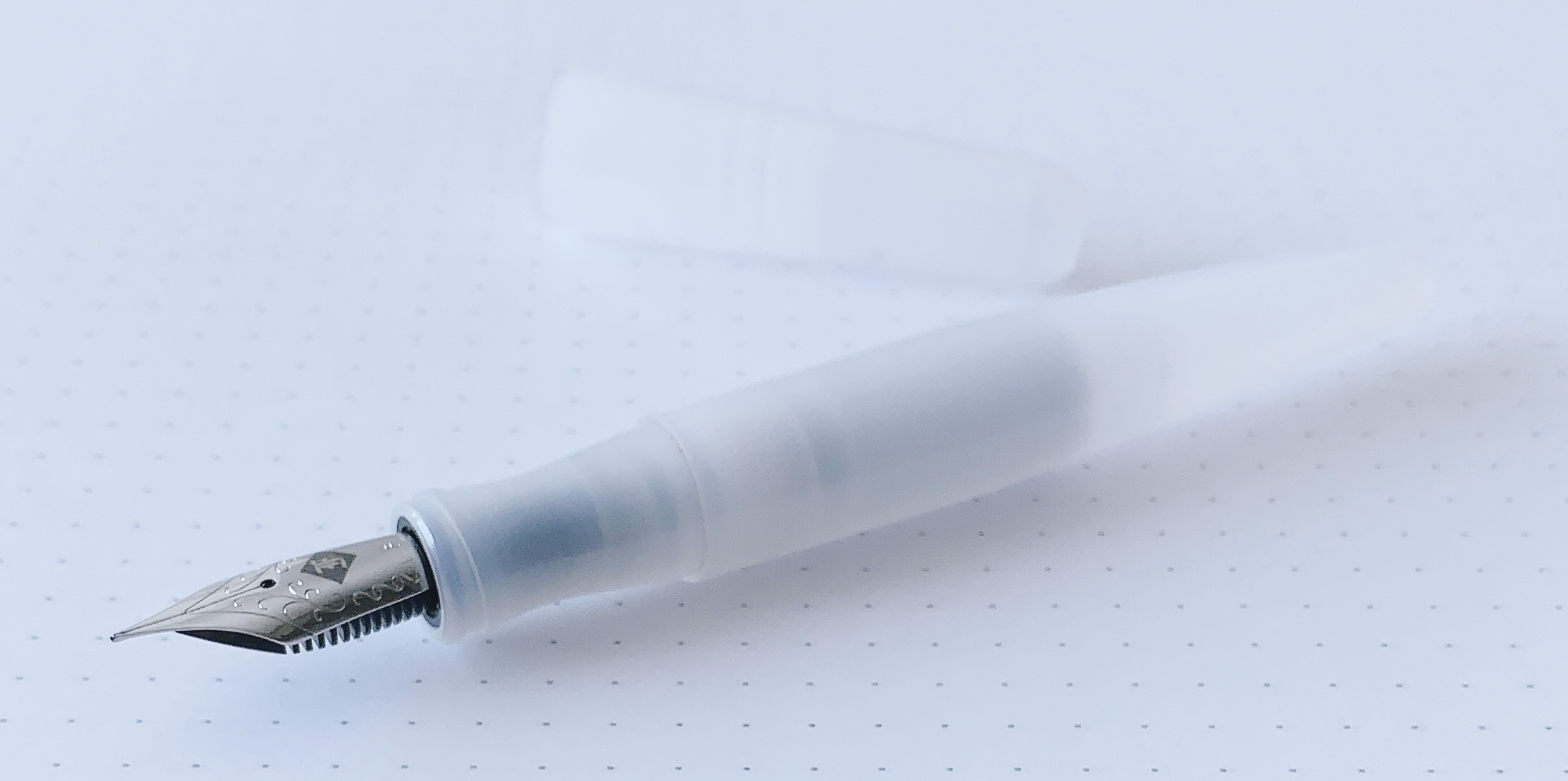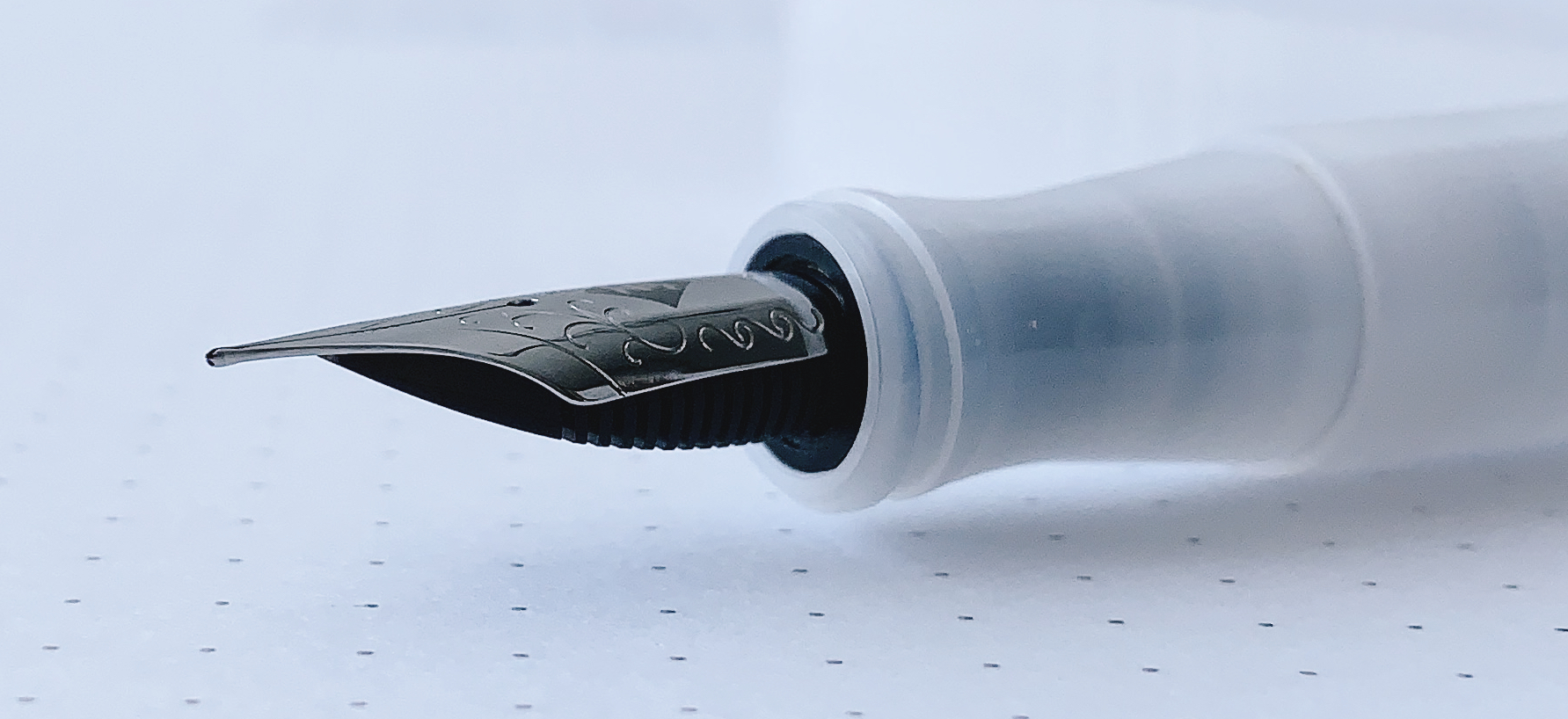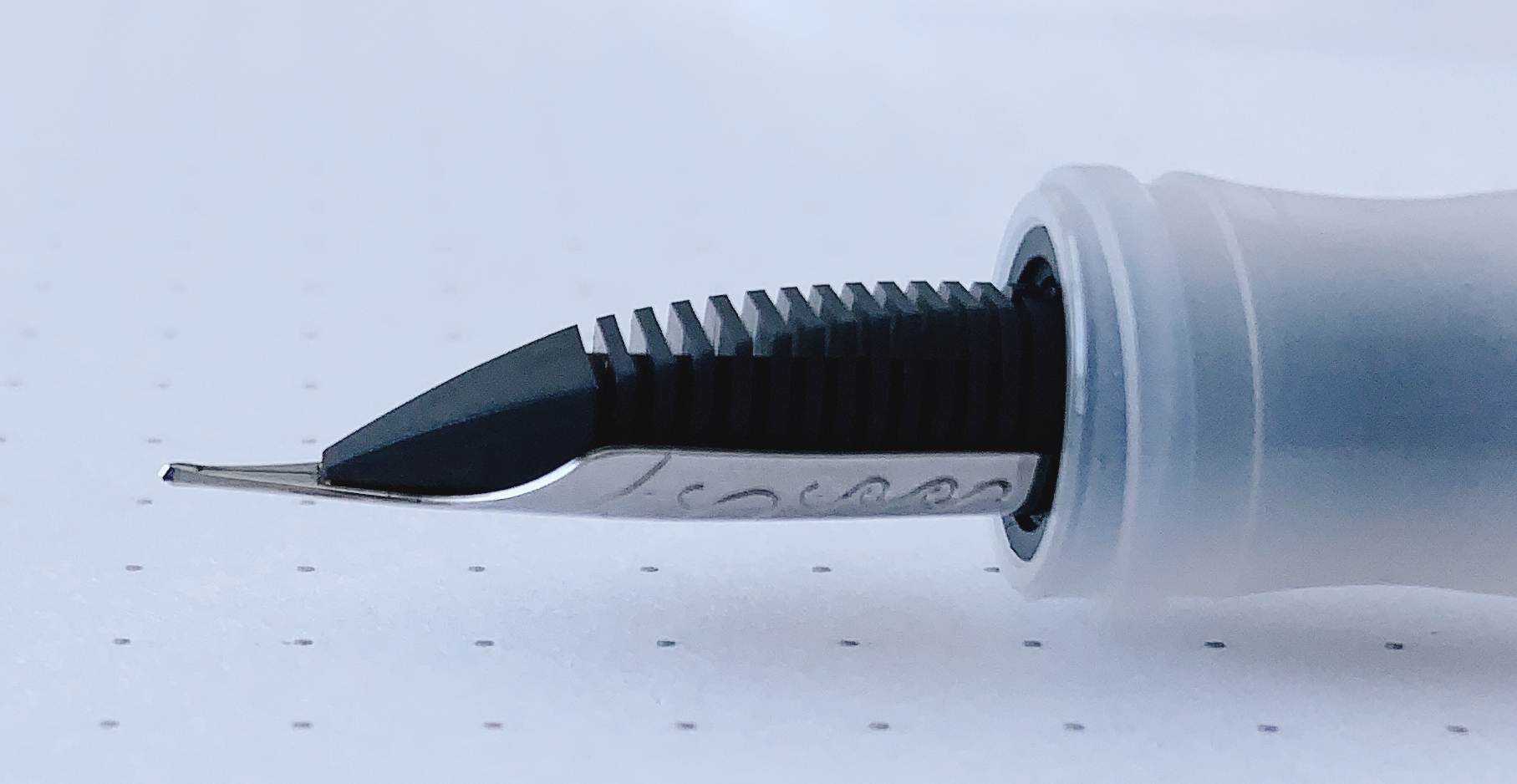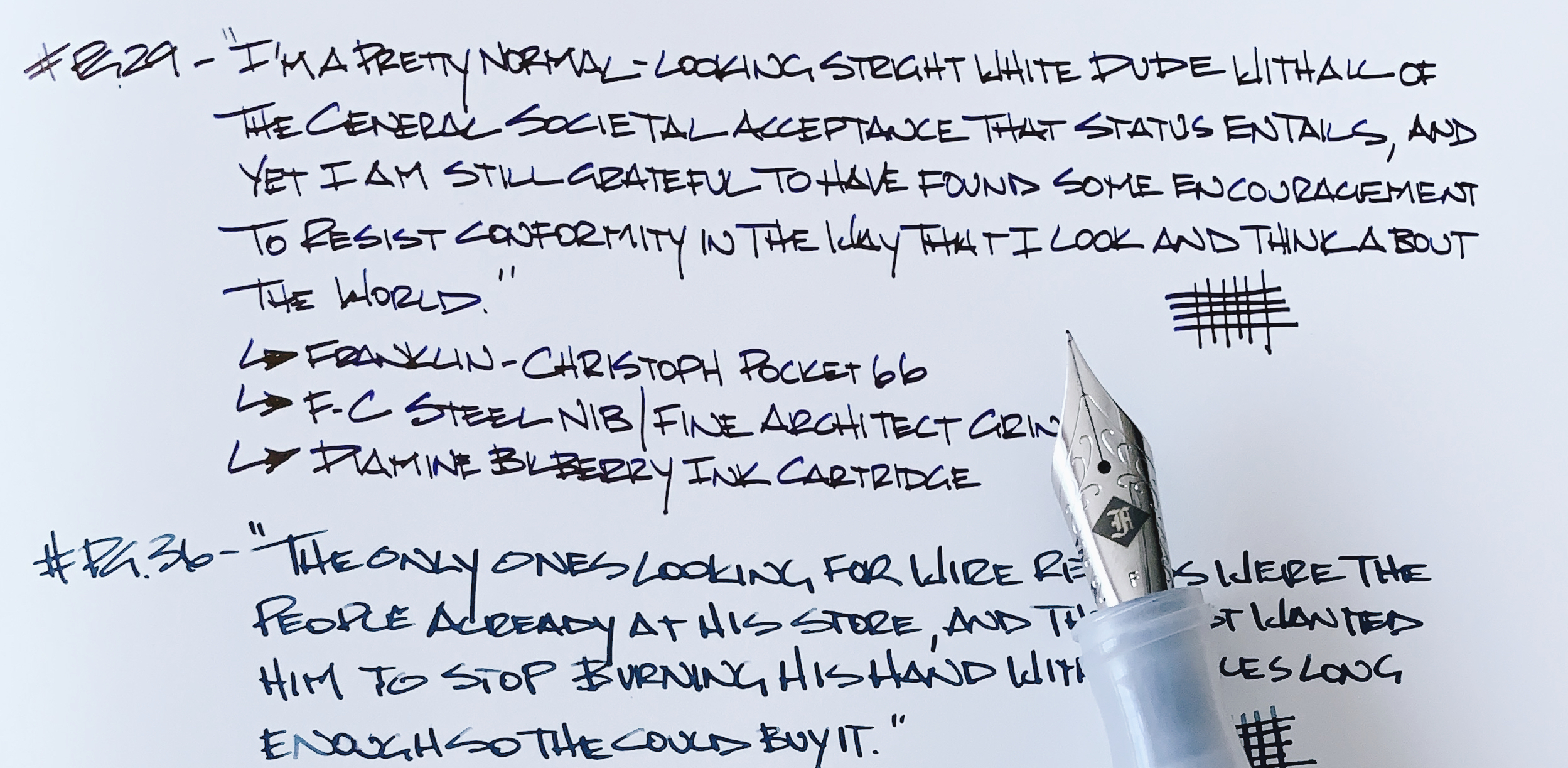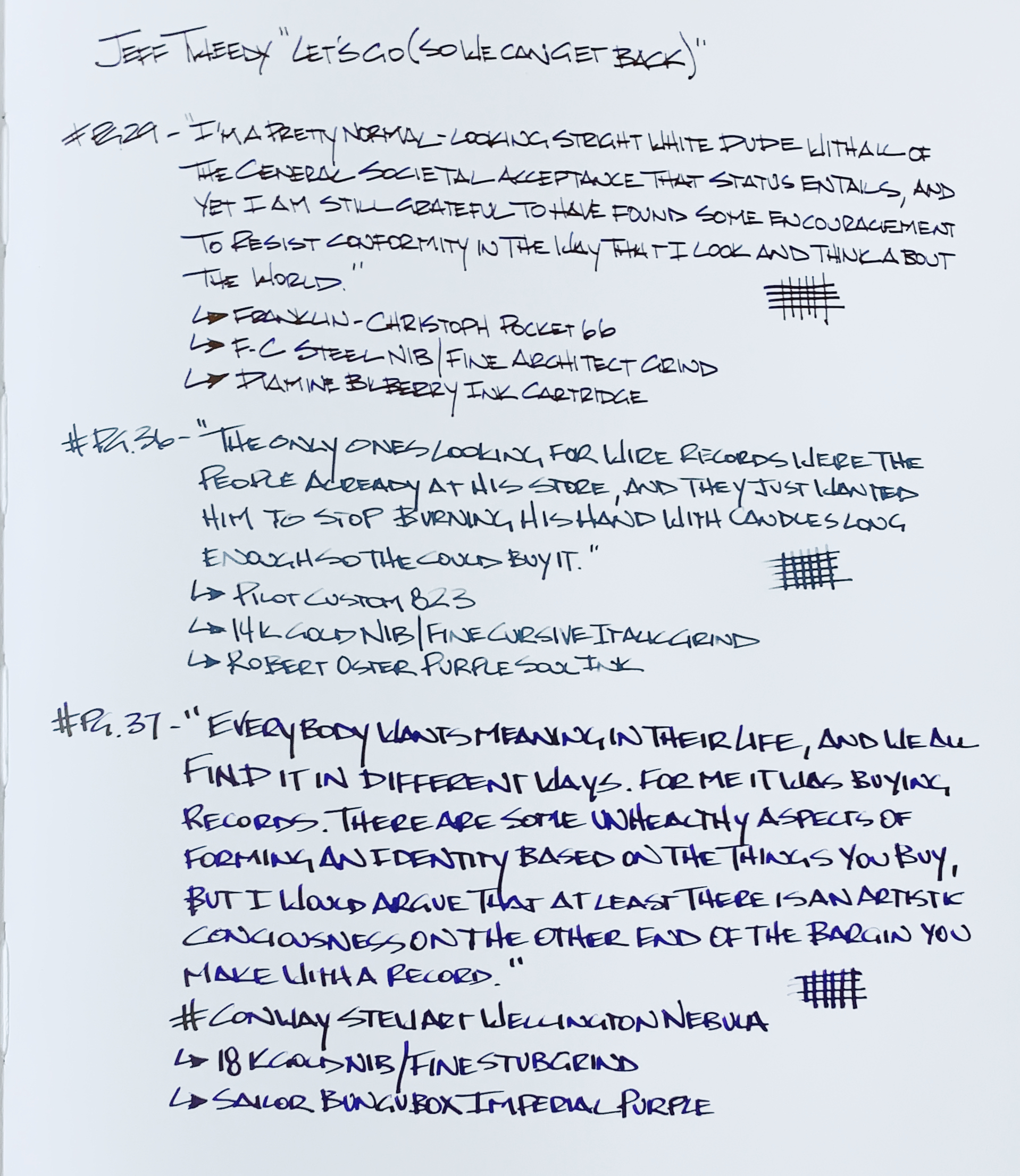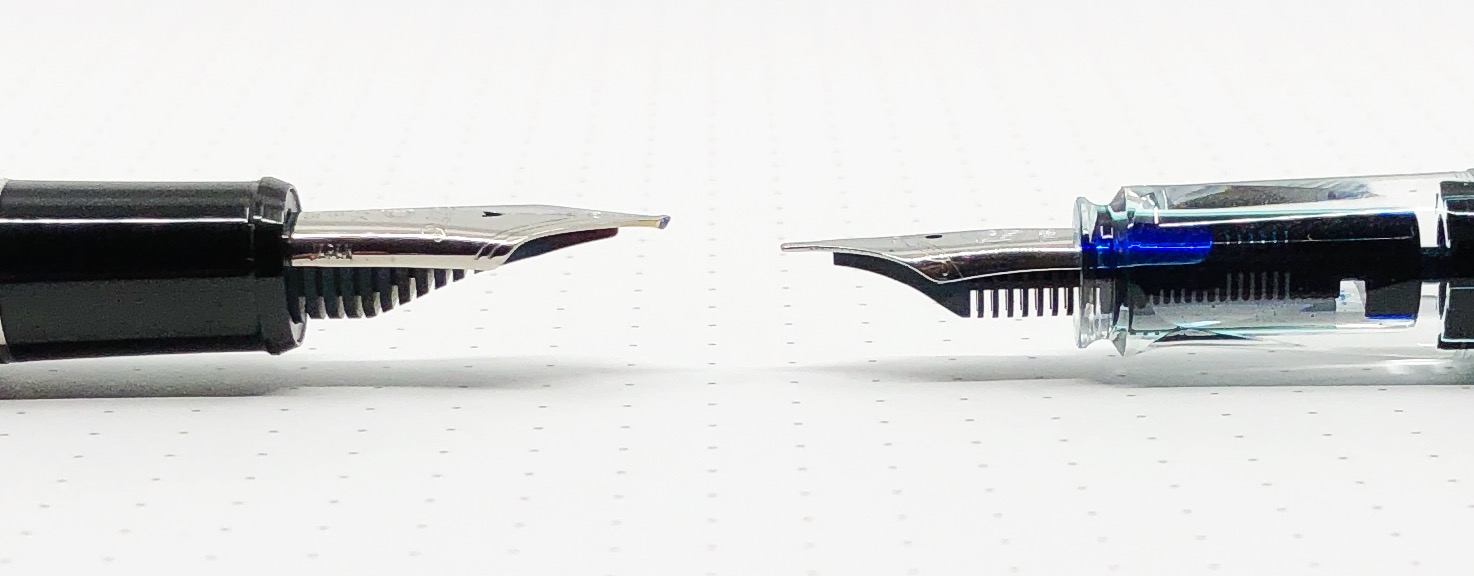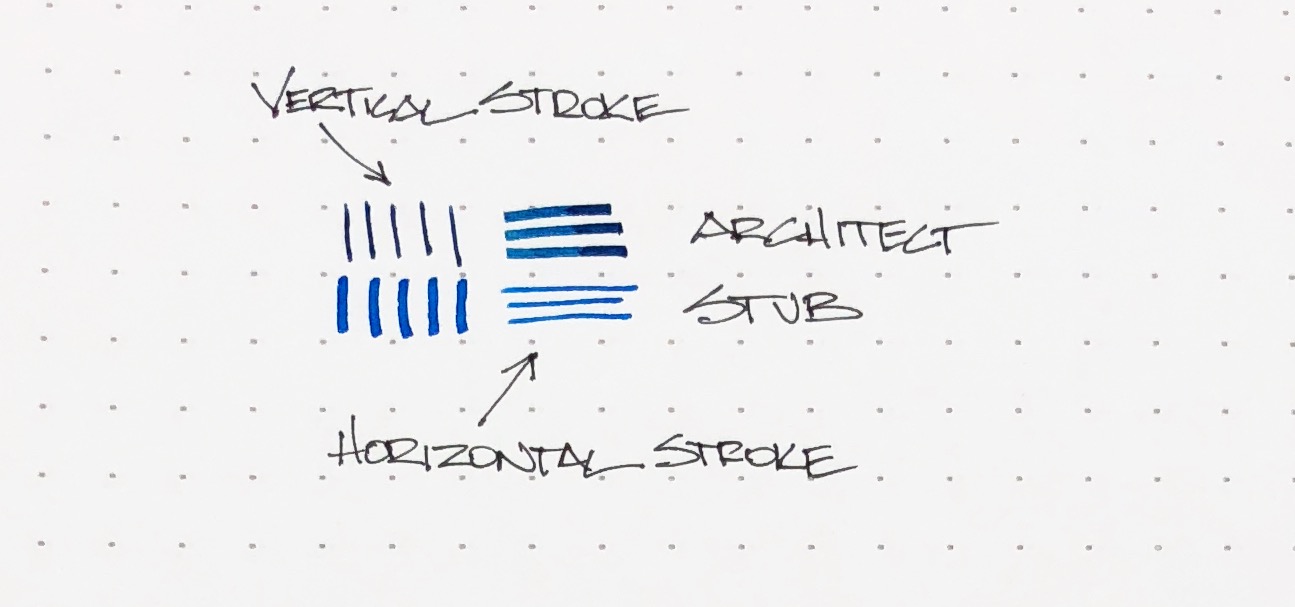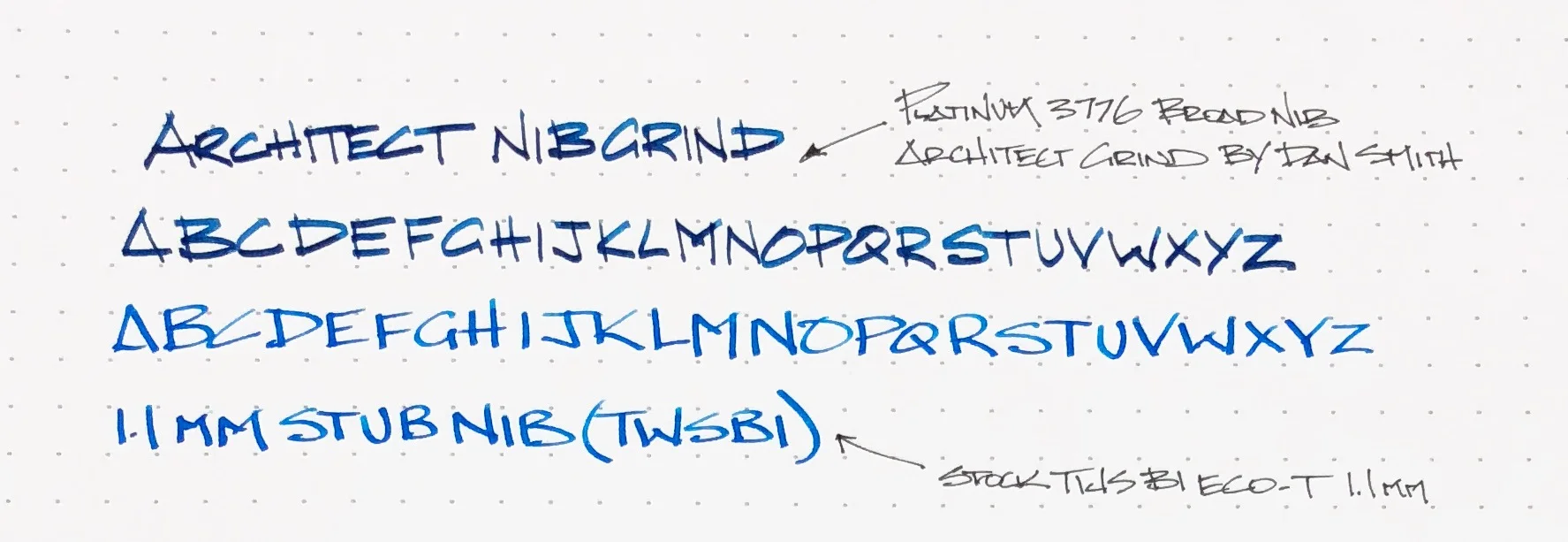(Susan M. Pigott is a fountain pen collector, pen and paperholic, photographer, and professor. You can find more from Susan on her blog Scribalishess.)
Long ago I owned a Pelikan M200 with a fine Architect nib (also known as a Hebrew/Arabic Nib). It was a lovely, delicate thing, ground by the great Richard Binder. But, when I originally ordered it I was young and naïve, new to fountain pens, and I didn’t realize that the fine nib would not give me the line variation I craved for Hebrew characters. I eventually sold the pen.
I’ve been itching to try a Sailor Zoom nib with an Architect grind, and I knew exactly which nibmeister I wanted to do it: John Mottishaw at nibs.com. Deciding on a Sailor pen for the nib was extremely hard (so many choices), but I eventually settled on the Sailor Pro Gear Classic Graphite Lighthouse. This surprised me a bit, because why would I want a “boring” gray pen when Sailor has so many bright, cheery colors? I don’t know. I liked the subtle color and the clear finials on both ends, and a more “sober” pen seemed somehow fitting for writing Hebrew.
Even though the Sailor Graphite Lighthouse is a North American exclusive, it comes in a basic Sailor box. The only thing differentiating it from a regular Sailor is a bookmark--woot?
The pen itself is a dark gray color with rhodium trim, which complements the color perfectly.
As stated earlier, the cap and barrel finials are clear, offering a special detail that makes the pen look unique. I just wish it lit up like a real lighthouse!
The Pro Gear Classic is a small to medium-sized pen--small if you don’t post it and medium if you do. It measures 5.1 inches/130mm capped, 4.5 inches/115mm uncapped, and 5.9 inches/150mm posted. It’s a light pen, weighing only 25 grams capped and 16 grams uncapped with the converter filled with ink. I usually like much larger pens, but for some reason I’ve gravitated towards Pro Gear Classics. I own several of them.
The real story with this pen is the nib. All Sailor nibs are gorgeous, with beautiful scroll work and the Sailor anchor inscribed above the gold content.
The Zoom nib is like an extra broad but with a triangular shape and lots of tipping. It’s the perfect choice for an Architect grind.
I asked John to make my Architect “forgiving,” so he smoothed it out more than a traditional Architect grind so I could use it to write cursive.
It’s absolutely perfect--smooth and juicy, but I can also get clean vertical and horizontal strokes for Hebrew and block letters.
Upside down the nib writes extra, extra fine. I’m unlikely to use the nib this way, but it’s a nice option if you want to write marginalia.
I inked the Graphite Lighthouse with Sailor Ink Studio 123, and the two pair together beautifully. I can write in my usual cursive style with this nib, and the pen simply floats over the paper.
I am absolutely thrilled with this pen and the Zoom/Architect nib. Even though the Pro Gear Classic Graphic Lighthouse is mostly sold out, you can, of course, order almost any Sailor with a Zoom nib from nibs.com and request an Architect grind. If you do block printing more than cursive, you’ll definitely want a classic Architect grind. But, if you’re like me and want an Architect that allows you to do cursive as well, just ask John for a more forgiving nib, and he will send you the perfect grind.
(I purchased the Sailor Pro Gear Graphite Lighthouse with my own funds.)
Enjoy reading The Pen Addict? Then consider becoming a member to receive additional weekly content, giveaways, and discounts in The Pen Addict shop. Plus, you support me and the site directly, for which I am very grateful.
Membership starts at just $5/month, with a discounted annual option available. To find out more about membership click here and join us!















